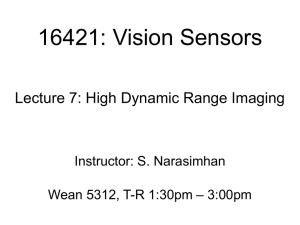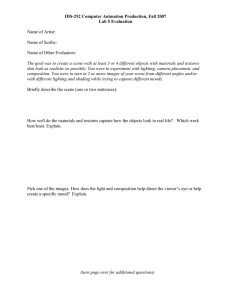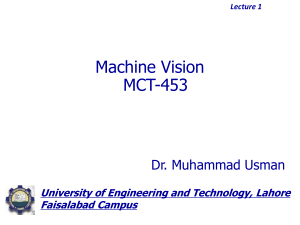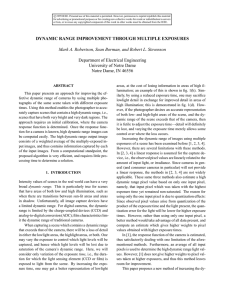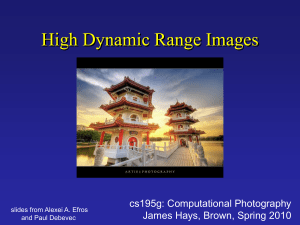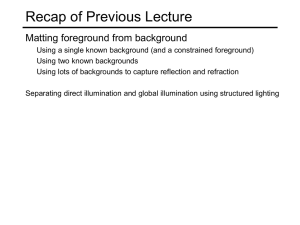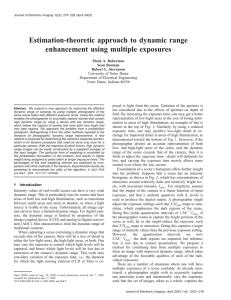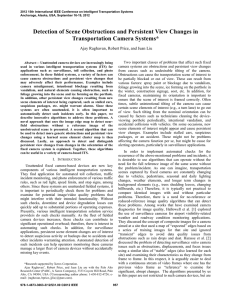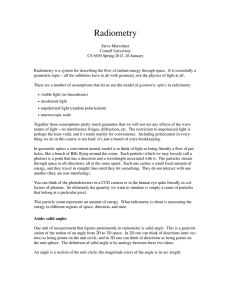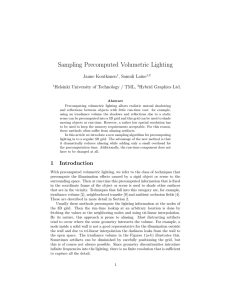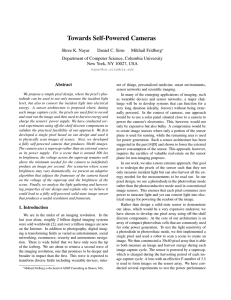High Dynamic Range Imaging and Tone Mapping
advertisement
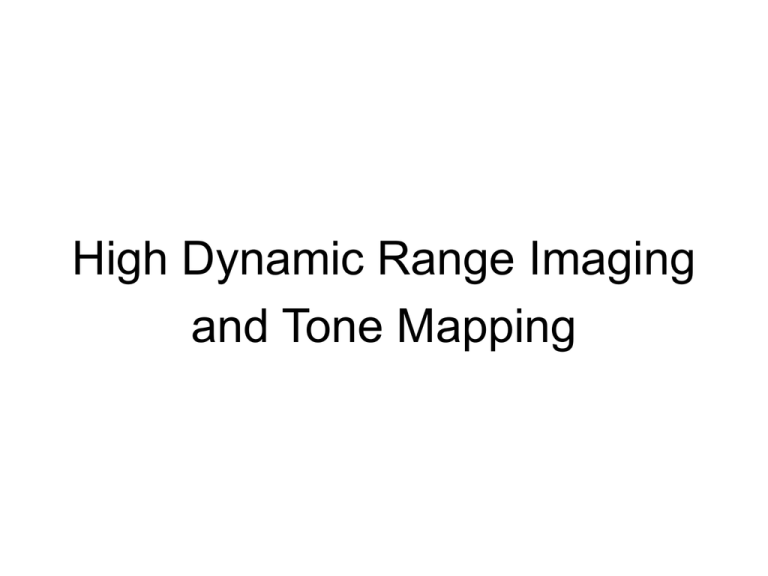
High Dynamic Range Imaging and Tone Mapping Paul Debevec’s SIGGRAPH Course The Problem of Dynamic Range • Dynamic Range: Range of brightness values measurable with a camera (Hood 1986) • Today’s Cameras: Limited Dynamic Range High Exposure Image Low Exposure Image • We need about 5-10 million values to store all brightnesses around us. • But, typical 8-bit cameras provide only 256 values!! High Dynamic Range Imaging • Capture a lot of images with different exposure settings. • Apply radiometric calibration to each camera. • Combine the calibrated images (for example, using averaging weighted by exposures). (Mitsunaga) (Debevec) Images taken with a fish-eye lens of the sky show the wide range of brightnesses. Relationship between Scene and Image Brightness • Before light hits the image plane: Scene Scene Radiance L Lens Image Irradiance E Linear Mapping! • After light hits the image plane: Image Irradiance E Camera Electronics Measured Pixel Values, I Non-linear Mapping! Can we go from measured pixel value, I, to scene radiance, L? Radiometric Calibration •Important preprocessing step for many vision and graphics algorithms such as photometric stereo, invariants, de-weathering, inverse rendering, image based rendering, etc. 1 g :I E •Use a color chart with precisely known reflectances. 255 Pixel Values g 1 ? g 0 90% 59.1% 36.2% 19.8% 9.0% 3.1% 0 ? 1 Irradiance = const * Reflectance • Use more camera exposures to fill up the curve. • Method assumes constant lighting on all patches and works best when source is far away (example sunlight). • Unique inverse exists because g is monotonic and smooth for all cameras. [Greg Ward] [Greg Ward]
